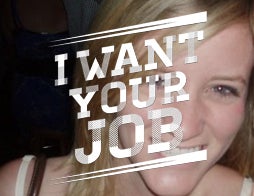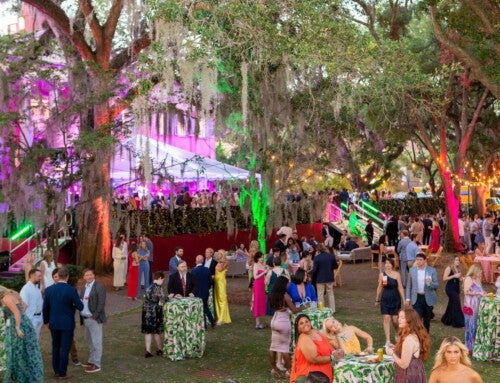Upon graduating from the College of Charleston, Sarah Gatling ’08 knew she wanted to write – she just didn’t know exactly what. Armed with a bachelor’s of arts in communication, she moved to New York City for a public relations internship. Her experience there opened her eyes to the advertising industry, and within a few years she was living in Chicago and writing print ads and social media content for Allstate’s “Mayhem” campaign, commercial scripts for Hallmark, along with a variety of additional work.
Q: What sparked your interest in copywriting?
A: I took a public relations capstone class my senior year and found many opportunities to be creative. We were doing work for real non-profits, and working in teams like you would at a public relations or advertising agency and I loved it, so I thought I wanted to go into public relations. But when I graduated and accepted an internship at Peppercomm in New York, I found myself coming up with ideas and repeatedly hearing, “oh our advertising agency handles that.” It occurred to me that I wanted to do what the advertising agencies do.
 Q: How did you break into advertising?
Q: How did you break into advertising?
A: To get started in advertising, you need a portfolio – a good portfolio is more important than a resume or cover letter in creative industries. One way to build your portfolio is to attend a portfolio school, which is a one- or two-year program that teaches the principles of advertising while helping students create a body of work.
I went to The Creative Circus. I found out about it from a friend of mine who was a student there studying copywriting. I didn’t know a lot about advertising, but copywriting sounded interesting to me. I emailed him to ask him more about the school, and it sounded like it would be perfect for me as a writer.
Q: How did you get started after portfolio school?
A: While I was in school, I networked with recruiters in a lot of big cities like New York, Chicago, Atlanta, and San Francisco. I’d email them with questions about what I could do to make sure I’d be a good fit at their agency when I graduated. Once I built relationships, it was easier to reach out to those people to see if they were hiring. I applied to about five different jobs when I was in my final quarter at school, one of which was Leo Burnett, a big agency based in Chicago. They hired me as a Junior Copywriter in 2011.
I was excited to start out working on such cool, well-known brands. I moved to DDB in December 2013 as a more senior copywriter to work with different clients and to experience a different agency culture. I had a friend that worked there and liked it, and he thought I’d be a good fit. So he offered to send my portfolio to the DDB recruiter, since he knew I was looking around Chicago for bigger opportunities.
Q: What was the interview process like at each of those agencies?
A: The interview process for Leo Burnett and DDB was similar. I had a phone or in-person interview with the recruiter, and then if that went well, I had a secondary Skype or in-person interview with a Creative Director. One thing it took me awhile to get used to is how casual the creative advertising environment is. You don’t wear business attire to work, and it’s not necessary to wear a suit to an interview. You work so many hours with your coworkers that your potential supervisors just want to make sure you have good ideas and would fit in with the agency culture.
Portfolio school really helps you get familiar with that culture. I definitely wouldn’t have been prepared to get a job in any big advertising industry without the guidance and training I got at The Creative Circus.
Q: What is the process of creating a national ad?
A: In a typical week I’ll get a creative brief from our strategy and account teams – a page of notes that tells the creative team what the client wants. A creative team is one art director and one copywriter. Sometimes several teams work on one brief, so the creative directors that work on that account lead all the teams working on that assignment.
For example, at Leo Burnett I worked on Hallmark, and in a nutshell, the brief said they wanted a TV spot that would encourage moms and grandmothers to buy a new Hallmark Christmas ornament that was debuting.
After we were briefed, my art director and I came up with several scripts ideas for the commercial. Then our creative director narrowed them down, and we presented the three best scripts to the client. The client chooses their favorite script, and from there, we storyboard the script out, and work with a production team at Leo Burnett to cast directors, actors, set designers and editors.
My art director and I are involved in every step of the way from pre- to post-production. It’s very much a team-oriented process, and it changes depending on what medium you’re producing the ad for– print, TV, radio, social media, etcetera.
Q: What’s your favorite medium to write for?
A: Even though going to Los Angeles to produce a commercial feels very glamorous, I still love writing headlines for print. The advertising industry keeps evolving to include all kinds of new media, but every medium needs good headlines. And I love sitting down with a blank piece of paper and writing 100 headlines, then combing through them to pick the best ones.
Q: What advice would you give to current students interested in advertising?
A: I was initially inspired to go into marketing through the communication department at the College – it provides so many amazing opportunities to communication majors. The Department of Communication Advisory Council is one of the best resources I’ve ever seen a college offer. Students have the chance to meet with world-renowned public relations, marketing and advertising bigwigs from across the nation. We’re talking leaders in the industry. It’s an incredible networking opportunity, and I got my first internship in public relations because I met Steve Cody, the founder of Peppercomm in New York, through the Advisory Council.
I also had a ton of wonderful communication professors, but the one who made me realize that this is what I want to do – to promote brands – is professor Amanda Ruth-McSwain and her public relations campaigns capstone. I would encourage everyone to take that class.
If you’re interested in getting involved in copywriting, I recommend you read Hey Whipple, Squeeze This by Luke Sullivan. He worked in advertising for 30 years, and gives great advice on entering the ad world, and all the good and bad things that come along with working as a copywriter.
Don’t be afraid to reach out to people in the industry; people are so willing to help. Also, intern and job shadow as much as you can. Networking is the key to having a successful career in marketing. Recruiters and creative directors change agencies all the time, so you never know when you might meet someone again down the road. There are a few great public relations and advertising agencies in Charleston you can reach out to during the school year, and thousands more across the nation if you can do a summer internship.




